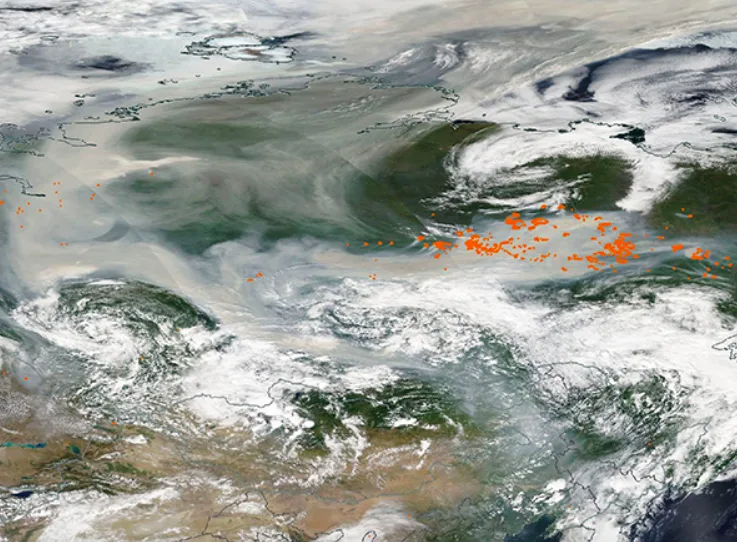
Largest wildfire on Earth sends smoke streaming into the North Pole
Smoke from wildfires burning thousands of kilometres away are travelling to some of the most remote parts of the planet.
The wildfires currently burning in Siberia are the largest on Earth and are causing smoke to trickle into the North Pole. According to NASA, this is the first time this region has experienced wildfire smoke in recorded history.
An image from NASA’s Aqua satellite taken on August 6th shows that the entire country of Russia was blanketed in smoke due to hundreds of boreal forest wildfires burning in the north.
“The smoke, which was so thick that most of the land below was obscured from view, stretches about 2,000 miles (3,200 km) from east to west and 2,500 miles (4,000 km) from south to north—but it captures only a small part of the smoke from the Russian fires,” the space agency states.

A vast, thick, and acrid blanket of smoke emitted from hundreds of forest fires covered most of Russia on August 6, 2021. (MODIS Land Rapid Response Team, NASA GSFC)
The Siberian wildfire smoke has also impacted parts of the Canadian Arctic.
“On August 6, a broad band of smoke from the wildfires, which appeared to be entrained with the clouds, could be seen over Nunavut, Canada, and western Greenland.”
Many regions of the planet are currently experiencing abnormally severe and historic wildfire activity, including Turkey, Greece, Brazil, and parts of North America’s Pacific Northwest. Several of these wildfires ignited as the respective regions experienced scorching heat waves and drought conditions.
A recent report from the Intergovernmental Panel on Climate Change (IPCC), which provides a comprehensive update of the current state of climate, says that scientists are virtually certain (99–100 per cent probability) that hot extremes, like heat waves, have become more frequent and intense across most land regions since the 1950s.
Thumbnail credit: Anton Petrus. Moment. Getty Images











